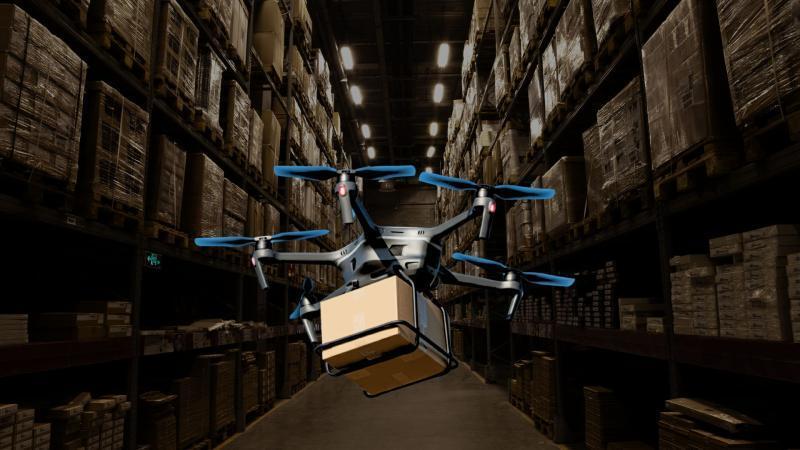
New Tech Optimizes Drone Fleets for Faster, Greener Deliveries
The rise of drone delivery has revolutionized the logistics industry, offering a faster and more efficient way to get packages from point A to point B. However, as the demand for drone-based delivery services continues to grow, so do the challenges associated with managing a fleet of drones. One of the most significant hurdles is the “Drone Warehouse Problem,” which refers to the difficulty of scheduling and coordinating drone flights to ensure timely and efficient delivery.
Imagine your packages arriving faster with a smaller environmental footprint. New research addresses the Drone Warehouse Problem, a crucial logistics challenge, by optimizing drone delivery schedules. This allows warehouses to efficiently manage varied drone fleets, ensuring parcels reach you quickly. It’s a practical move toward scalable, sustainable last-mile delivery solutions for all.
The Drone Warehouse Problem is a complex issue that involves multiple variables, including drone availability, weather conditions, traffic, and package demand. Traditional methods of scheduling drone flights rely on manual processes, which can lead to inefficiencies, delays, and increased costs.
A team of researchers from [University Name] has developed a novel algorithm that tackles the Drone Warehouse Problem head-on. The algorithm, called “DroneFleet,” uses machine learning and optimization techniques to schedule drone flights in real-time, taking into account a range of factors that can impact delivery times.
According to the researchers, DroneFleet is designed to optimize drone fleet performance by minimizing delays, reducing costs, and increasing the efficiency of delivery routes. The algorithm uses historical data and real-time information to predict demand, traffic patterns, and weather conditions, allowing it to make informed decisions about drone scheduling.
One of the key benefits of DroneFleet is its ability to handle varying drone fleets and package sizes. Traditional scheduling algorithms often struggle to accommodate different types of drones and packages, which can lead to inefficiencies and delays. DroneFleet, on the other hand, is designed to work with a range of drone models and package sizes, making it a versatile solution for logistics companies.
The researchers tested DroneFleet in a simulated environment, using real-world data to simulate a variety of scenarios. The results showed that the algorithm was able to reduce delivery times by up to 30% compared to traditional scheduling methods. The algorithm also reduced the number of drones required to complete a delivery route by up to 20%, which can help reduce costs and environmental impact.
The potential benefits of DroneFleet are significant. With the ability to optimize drone fleet performance, logistics companies can reduce costs, increase efficiency, and improve customer satisfaction. The algorithm can also help reduce the environmental impact of drone delivery, as it can optimize routes to reduce energy consumption and emissions.
The development of DroneFleet is a major breakthrough in the field of drone logistics, and it has the potential to revolutionize the way packages are delivered. As the demand for drone-based delivery services continues to grow, the need for efficient and effective scheduling algorithms will become more critical.
In conclusion, the novel algorithm developed by the researchers at [University Name] has the potential to transform the way drone fleets are managed. By optimizing drone delivery schedules, DroneFleet can help reduce delivery times, costs, and environmental impact. As the logistics industry continues to evolve, it will be exciting to see how this technology is applied and the positive impact it can have on our daily lives.
Source:
https://researchmatters.in/news/novel-algorithm-tackles-drone-warehouse-problem-faster-deliveries






